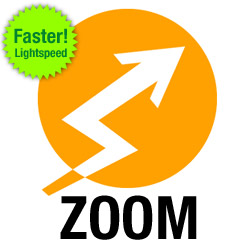 The rule is this: Great packaging will not necessarily help your sales but bad packaging will hurt you. So you need great packaging just to have a fighting chance.
The rule is this: Great packaging will not necessarily help your sales but bad packaging will hurt you. So you need great packaging just to have a fighting chance.
Everyone is fighting to get noticed on the shelf. A lot of times people don’t see the product. They can’t touch it, taste it, or use it. All they have to go on to make their decision is the packaging.
What Packaging Needs To Tell The Customer
Your packaging has a job to do that’s more than just being a package. It has to help generate sales. Here’s a checklist of things to think about when designing packaging:
- Grab Attention. You’re surrounded by the competition. Your packaging has to jump out and grab attention.
- Promote The Brand. You might notice that large, brand-savvy companies don’t create label graphics that look like a Picasso painting. They use bold, easy-to-read lettering, block colors, and good contrast between the brand name and the background. How easy is your package to read? From how far away? How easily recognizable is it?
- Generate Trust. People do not buy things they have low confidence in. Your packaging needs to convey professionalism. It has to show people that this product came from a company that knows what it’s doing.
- Promote Value. If there is something about your product, or the package itself that makes you better than everyone else beside you on the shelf, tell people with the package. Great innovation, technology, and features can go unnoticed if they’re all packaged up or they don’t jump out at you. Promote your value prominently on the front of your packaging.
Sustainable Packaging
Trends like environmental packaging, recyclable, and made from recycled materials have been around for a while. The new kid on the block is sustainable packaging. This is what everyone is talking about and moving towards now. Here’s what sustainable packaging is:
- Earth Friendly. Sustainable packaging throws lower green house gas emissions into the atmosphere during its manufacture. This has to do with the types of materials used, the amount of material used to create each package, and the processes used to create the package.
- Energy and Resource Efficient. Less material requiring less energy to shape that material into a package.
- 100% Recyclable in an Efficient Manner. A good example of this would be a plastic bottle with a label made from the same type of plastic. A plastic bottle with a paper label is still completely recyclable, but not as easily or as efficiently.
- Uses Bio-materials. Bio-materials decompose naturally in the environment. These are things like cardboard or biodegradeable plastic. If it can not be, or for some reason is not recycled, then it shouldn’t be a burden on landfills and the environment in general after it’s discarded.
You can see that sustainable packaging takes the green revolution a step further. It’s not just about recycling and reusing. It’s about lowering the amount of natural resources, energy, cost, pollution and environmental impact as much as possible.
Packaging Resources
If your company is developing products, you need to stay up to date on what’s happening in the packaging world. The easiest way to do this is to subscribe to Packaging World Magazine. In Canada, you can subscribe to Canadian Packaging Magazine. Some companies may even be eligible for free subsriptions to these magazines. You can apply to find out.
Another great rescource if you really want to jump in to the thick of it is to go to a trade show. Packexpo is sponsored by PMMI and it is one of the biggest and best packaging conventions around.
Both Pack World Magazine and Pack Expo have great websites with tons of articles you can search through on packaging, materials, equipment, and packaging trends.

3 thoughts on “Packaging Sells Product”
Comments are closed.